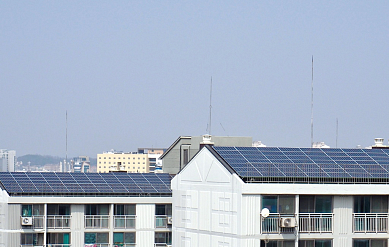There is interest in electricity sharing. However, there is still a lack of greater economic motivation.
Energy communities are on the rise. What can be done to accelerate their growth?

The increasing installation of photovoltaic panels in homes, businesses, and public buildings has led to a growing interest not only in physical and virtual batteries. Sharing excess solar energy is emerging as another solution. To facilitate this, energy communities and active consumers are being formed. Are new players entering the electricity market? How does Slovakia compare to the Czech Republic? What factors influence the further development of community energy?
An analysis of entities registered with the Network Industry Regulatory Office (ÚRSO) shows a gradual start. In 2023, the first community, "Prvé Energetické Spoločenstvo na Slovensku" in Prešov, was registered following the introduction of enabling legislation. Last year, four more communities were added: "Obecné obnoviteľné zdroje" in Modrovka, the civic association "Ecomunita" in Piešťany, "Energetické družstvo Bratislava" in Ružinov, and most recently, "ES Bratislava-Petržalka" in November 2024.
None of these communities have yet registered with the Energy Data Center (EDC) operated by OKTE, which is responsible for evaluating shared electricity flows. However, EDC registration is not mandatory for community initiatives. "This either indicates that a legal entity with a certificate has been established and is preparing its own equipment and sharing group, and will eventually register with the EDC. Or it's possible that the energy community was created purely for marketing purposes, and the entity is pursuing its own path. In Slovakia, the latter seems more likely," explained Libor Láznička of Energiqube at last year's e-focus conference.
At the end of last year, there were 100 registered sharing groups of active consumers in the EDC. The number of consumption points included in sharing reached approximately 400, while the number of supply points, from which shared electricity was distributed, exceeded 140.
Community energy in the Czech Republic is at a similar stage of development as in Slovakia, with the difference being that real solutions began to develop before the new legislation was introduced, and it is still being supplemented. The regulator registered 14 communities and companies at the end of last year, with one operating in the Czech EDC.
There are significant differences compared to Slovakia in terms of the number of sharing groups (over 4,200), consumption points (5,500), and supply points (2,700) involved in electricity sharing. The slightly more favorable conditions for community energy in the Czech Republic are also evident in the volume of shared energy, which has been higher from the beginning than at this stage in Slovakia.
Return on Investment in an Apartment Building
This is primarily due to the established environment for electricity sharing, where several factors play a key role. The main factor is economic motivation. An example is sharing electricity in an apartment building with an installed photovoltaic system.
Makers modeled the creation of a sharing group in a building with 20 residential units. A 10 kW photovoltaic power plant on the roof produces electricity. The condition for sharing is also the installation of an intelligent metering system. Since the average apartment has an annual consumption of up to 4 MWh, which is the limit for a free meter from the distributor, each household must purchase an IMS at a cost of approximately 150 euros. The investment costs for photovoltaics reach approximately 15,000 euros.
Graph: Balance of electricity production and consumption in an apartment building with a PV system over several days in April 2024.

Source: Energiqube
With these parameters, an entire apartment building sharing electricity could save 800 euros annually, meaning a 22-year return on investment. Besides the costs of photovoltaics, IMS, and distribution fees, the heavily regulated electricity price is a significant factor. 'Households are not currently economically motivated to form communities in apartment buildings without some form of state subsidy, such as through the Green Business scheme,' believes L. Láznička.
We're not waiting for subsidies, but they would help
Energy communities in Slovakia seem to be treated like an unwanted child. We have implemented European legislation, but that's where it ended. There has been no support from the state; various schemes have been discussed for over a year,' evaluates Richard Modrák, chairman of the Slovak Energy Communities Cluster.
The association is not waiting for state aid and is initiating activities with interested parties on its own. They have brought together photovoltaic installers who have already installed several thousand systems, including batteries, and offer electricity sharing. 'We encourage interested households, businesses, and municipalities to find a 'partner' for sharing. There are municipalities that have installed photovoltaics and are using some form of sharing. We have found financial mechanisms for them, even outside of state subsidies,' he says. 'But it would be great if there was a Green Business scheme or another similar program for these solutions. There is a demand from people interested in sharing electricity. If we want to help people with energy prices, let's start using this solution,' appeals the representative of the community energy sector.
According to Modrák, the association currently has over 50 apartment buildings in development where sharing projects are being prepared, despite the lack of state support. 'With a reasonable mix of photovoltaics, batteries, charging stations, and sharing with other spaces, it makes economic sense and the return on investment is around 8-10 years. There is also money in the private sector for such solutions,' says R. Modrák.
Source: https://www.energie-portal.sk/
